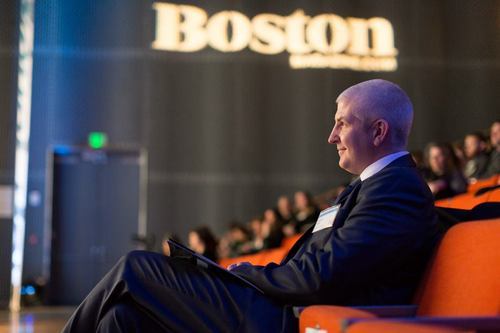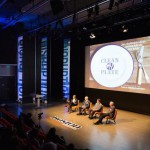Hope & Potential: Sasaki on the Future of Food
– – – – –
Food is central in our lives. Growing food. Finding food. Purchasing food. Eating food. It is essential to individual lives and our societal functioning, and yet, we do not plan for food and agriculture—at least not nearly enough—so argues Sasaki’s James Miner, Managing Principal.
In recent years, James has nurtured a growing personal and professional fascination with cultivating an ecosystem that supports more sustainable regional food systems. “Food planning is just starting to become part of my industry—regional planning, architecture, and design—in a way that it never has been before,” says James. Presently, the term foodshed has made its way into planning circles, referring to the 100-mile radius surrounding an urban area, outside of which food transport costs get far more expensive and quality of food declines. James is thinking in terms of foodsheds, trying to find a local model for regional food systems that can be replicated both domestically and abroad. He grapples with making quality, regional food accessible to more people than just those who can afford to peruse the organic food aisles at boutique grocery stores or at farmer’s markets in affluent neighborhoods.
Just this month, James spoke on this topic, as a panelist at the 2015 Edge Conference, held at Boston’s Institute of Contemporary Art (ICA). James joined fellow panelists—Ayr Muir, CEO of Clover Food Lab; Jan Schlichtmann, Attorney and Principal at Oceanic Innovations LLC; and Aaron Niederhelman, Managing Director at the Entrepreneur Agrarian Fund—to share solutions of change for addressing the large problems with the food system, going beyond traditional pointing of fingers.

Through engagement with local and international planning work that integrates agricultural systems into regional planning, which is still all too rare today, James came to see how development without concern for food sourcing gives rise to inefficient, expensive, and unsustainable ways of getting food from farm to dining room table.
In Iowa, for example, where James led a regional planning effort, one of the most startling realizations for James was that Iowans craved access to local food in a state that abounds in agricultural riches. Eighty percent of food sold in Iowa is imported, much of it traveling 1,200 miles or more to arrive in local stores. “It was a complete contradiction to see farmland stretching endlessly in every direction while knowing that the cob of corn on your plate came from several states over,” James recounts.
On the other side of the world, in China, where low-lying agriculture land regularly abuts the soaring skyscrapers of newly constructed metropolises, there is an opportunity to be more thoughtful about integrating food production into city life. There is potential to recapture food as a central part of people’s lives. In Songzhuang, for example, where Sasaki conducted a regional planning initiative, the planners aimed to “restore ecological systems and make agriculture an important part of community and place-making—making agriculture a cultural amenity.” They did this by moving agricultural lands from the urban perimeter to the city center. “I think we’re going to see more of this. [Food infrastructure planning] is becoming more of a disruptive force in the world of planning and design,” James enthuses.
“We have agricultural production at a scale unprecedented in our history, but we have limited access to it where we actually want, need, and can afford to have it.”
The big problem, James says, is “we have agricultural production at a scale unprecedented in our history, but we have limited access to it where we actually want, need, and can afford to have it.” It’s a daunting challenge but one we ought to get ahead of. Fellow panelist, Jan Schlichtmann, passionately agrees, asserting, “if we break these connections to the environment around us we’re going to lose a tremendous amount that we really do need to connect with in order to have a future. How we treat the environment around us—the local environment, that local connection—is absolutely crucial… we are seeding our food security and nutritional security to others. I don’t think that’s a good bet.”
For James and fellow panelists, it’s clear that the gamble on food is not one they are keen on taking. Rather than leave it to chance, they advocate seizing the moment to finally move beyond identifying the many problems embedded in a system that most agree is off-kilter and in need of fixing. These are leaders drawing from different industries, bonded by a shared commitment to getting to the fixing. Together, they are finding new, constructive solutions that improve access to quality, affordable, local food on local, regional, and global scales.
To hear more perspectives from James, Jan, and others, watch the full panel session here.
About The Edge Conference: The annual conference aims to convene leaders in innovation to examine the business issues of the day—from finance, to food, to healthcare. The event is put on by The Ad Club, a trade association for the New England marketing & communications industry. This year’s conference was held on January 12, 2015. More than 300 guests attended the half-day conference, which is dedicated to exploring the brands, ideas, and people who are pushing the boundaries and disrupting the status quo; influencing the future of marketing and branding.

